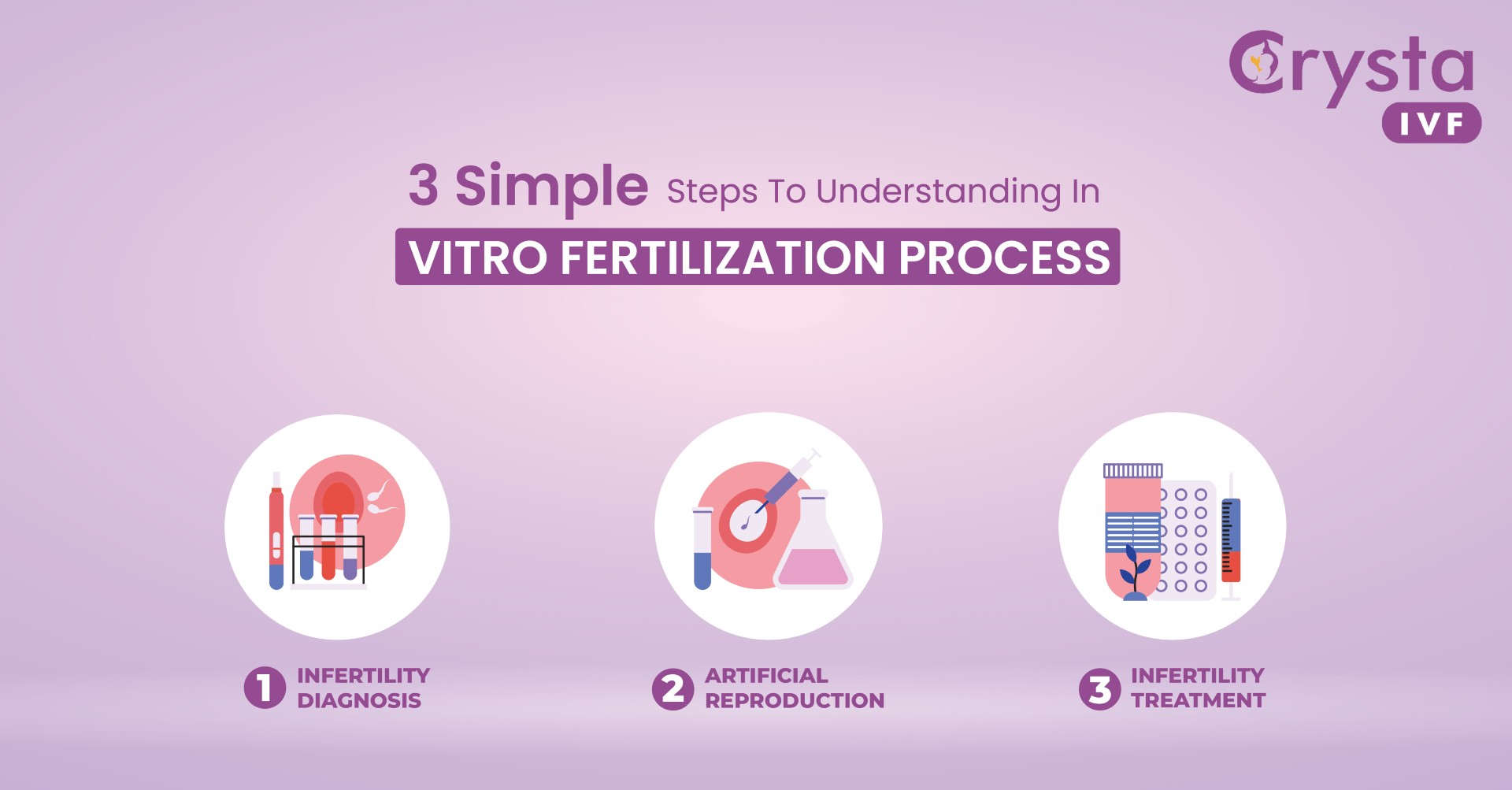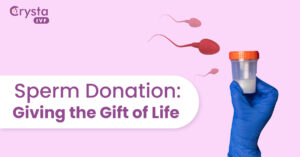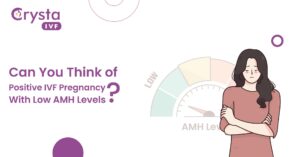In vitro fertilization (IVF) is a highly effective reproductive technology that can help couples who have difficulty conceiving. However, most people generally believe that IVF is a long, expensive & tedious process.
But in fact, the whole IVF process is simple, comprising three crucial steps, i.e., Stimulate, Retrieve, and Transfer. We’ll understand this briefly later in this blog.
But before, it is essential to understand that there are many factors to consider before starting an IVF cycle. Following the right process will make all the difference in whether or not your cycle will be a success.
So, read on to explore why you should consider adding ART technologies to your options, how an IVF cycle works, and what steps you need to take if you want to start your own fertility journey with this method.
What is In Vitro Fertilization (IVF)?
Infertility affects both men and women of reproductive age, though it is more commonly thought of as a woman’s problem. There are many reasons why a couple may be unable to conceive, including low sperm count, ovulation disorders, and blockages in the fallopian tubes.

In vitro fertilization is a procedure that can help many couples overcome infertility. The first step is to stimulate the ovaries to produce eggs, and the eggs are then retrieved and fertilized with the sperm in a lab. The resulting embryo is then transferred to the woman’s uterus for implantation.
So, if you’re trying to conceive for over a year without success in hand, it’s the right time to consult fertility experts and explore your fertility options.
Why Should You Start an IVF Cycle?
There are several good reasons to consider assisted reproduction. First, it can help you address fertility issues if you have issues with your eggs or sperm.
If you have problems with your uterus, ovaries, or fallopian tubes, an IVF cycle can help you address those issues so you can potentially have your own baby. Another reason to start an IVF cycle is if you and your partner had tried other fertility treatment options before that resulted in pregnancy.
Getting pregnant is hard, and the odds are slim, but if you and your partner have tried to conceive and failed, IVF offers another option to help you address your fertility issues.
How Does IVF Work?
IVF, or test tube baby, involves a set of different procedures involving the manipulation of egg & sperm to help couples suffering from infertility or other medical conditions.
After you consult with the fertility doctor and they review your medical history and administer essential fertility tests, you may begin planning your IVF treatment. Some clinics tailor the IVF process to each individual patient based on their specific needs and medical condition.
Though the whole IVF process involves can be summarized into 6 steps:
- Consultation & Fertility tests
- Ovarian Stimulation
- Egg Retrieval & Semen Collection
- Fertilization or Insemination
- Embryo Transfer
- Pregnancy Test
However, there are 3 crucial steps of the process, i.e., Stimulate, Retrieve, and Transfer.
Ovarian Stimulation
In order to get pregnant, two things are essential: sperm and an egg. Doctors will collect your eggs before you go into your treatment, so they cannot get damaged.
Once your treatment is underway, you will need to take medications to stimulate your ovaries and increase the production of multiple eggs. Ovarian stimulation generally begins on day 1 of your period, and you’ll be guided on how or when to take these fertility medications.
Using these medications or injections will stimulate the reproductive hormones such as follicle-stimulating hormone (FSH) & Luteinizing hormone (LH) that trigger ovaries to produce more mature eggs.
Egg Retrieval
Once the eggs are ready to be collected, a small surgery will be performed to retrieve them carefully. The process generally involves a needle inserted through the vagina to create a suction.
Once the eggs are collected, your partner will need to provide a semen sample. After your samples are collected and ready to go, it’s time to start the insemination process! Your doctor will be ready to inseminate you with your partner’s sperm and eggs. Once this is complete, your eggs and sperm will be put together in a lab.
The fertilization results in embryos or embryos that’ll be transferred to the woman’s uterus for implantation.
Embryo Transfer
The blastocyst is created in an IVF procedure by dividing and multiplying the embryo cells over five to six days to create an explosion of cells (blastocyst). It may then be transferred to the uterus or frozen for future trials (known as Frozen Embryo Transfer).
Frozen embryo transfer occurs after a period of time depending on multiple factors such as –
- If you don’t want to be a parent yet
- If the uterus isn’t ready for implantation
- To reduce the risk of ovarian hyperstimulation syndrome (OHSS) during IVF
- To reduce the risk of fresh embryo transfer
- If Frozen embryo transfer has a better success rate
Otherwise, your fertility doctor may recommend transferring the prepared embryo on the day 3 or day 5 stage of the embryo. A successful embryo transfer results in implantation.
During implantation, a blastocyst attaches itself to the uterus wall, triggering reproductive hormones (estrogen, progesterone, and hCG, or human chorionic gonadotropin) to mark the beginning of pregnancy.
What to Expect in an IVF Cycle?
IVF cycles generally take six to eight weeks, with some patients getting pregnant much earlier. The first few weeks are crucial in this process. During this time, you will receive medical injections to produce multiple eggs and stimulate your ovaries to produce more mature eggs.
You will also have hormonal tests to help your doctor determine the best time to start your fertility treatment. Your doctor will then monitor your progress to ensure everything goes well.
The Road to Successful IVF
Successful IVF is dependent on many factors, and it is important that you are aware of what these are and how they affect your cycle.
- Your Cycle – Can you get pregnant? If not, is it due to a problem with your cycle?
- Your Treatment – Did you start your treatment at the right time? At the right dosage? Did you get all the shots on time?
- Your Health – Are you healthy enough to undergo an invasive procedure like IVF? Are you under any kind of stress that could negatively affect your cycle? Are you exercising regularly?
- Your Partner’s Health – Are you both healthy enough for you to attempt to get pregnant? If you have a medical condition, will it affect your fertility?
- Your Partner’s Cycle – How long has it been since your last child? How long has your partner been trying to get pregnant? If it’s been a while and neither of you has gotten pregnant, is the timing right for you both?
- Your Relationship – Are you and your partner in a good place? Are you both using this as an opportunity to spend time together and be intimate?
You should be aware that with the right guidance at the right time, IVF treatment often results in success and can be manageable with your work & life.
Get proper Guidance at Crysta IVF
So, if you are considering starting an IVF cycle, make sure you are prepared for how long it will take as well as how much it will cost. As you can see, starting an IVF cycle can be confusing, invasive, and challenging. However, proper preparation and planning can be a positive and rewarding experience.

Getting a consultation from fertility experts at the best IVF center in Delhi NCR is recommended. Connect with a fertility specialist at Crysta IVF to have all your questions answered about IVF so that you can make the best decision on your fertility journey.




